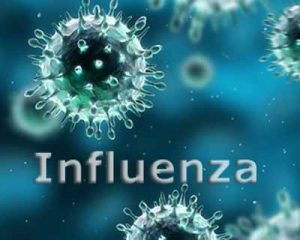- Home
- Editorial
- News
- Practice Guidelines
- Anesthesiology Guidelines
- Cancer Guidelines
- Cardiac Sciences Guidelines
- Critical Care Guidelines
- Dentistry Guidelines
- Dermatology Guidelines
- Diabetes and Endo Guidelines
- Diagnostics Guidelines
- ENT Guidelines
- Featured Practice Guidelines
- Gastroenterology Guidelines
- Geriatrics Guidelines
- Medicine Guidelines
- Nephrology Guidelines
- Neurosciences Guidelines
- Obs and Gynae Guidelines
- Ophthalmology Guidelines
- Orthopaedics Guidelines
- Paediatrics Guidelines
- Psychiatry Guidelines
- Pulmonology Guidelines
- Radiology Guidelines
- Surgery Guidelines
- Urology Guidelines
IDSA Guidelines for Management of Influenza

Infectious Diseases Society of America, IDSA with input from infectious-disease specialists in paediatrics and obstetrics has released Guidelines for Diagnosis, Treatment, and Chemoprophylaxis of Influenza. The guideline is intended for updating Healthcare providers who are likely to provide initial diagnosis and treatment of patients with influenza.
The present guideline updates last published guideline in 2009 following the emergence of pandemic novel influenza type A(H1N1). The update places great emphasis on using rapid nucleic acid-based testing on properly obtained specimens to achieve a diagnosis of influenza as opposed to flu-like illness caused by other agents. The guideline creators also emphasize rapid treatment or prophylaxis with anti-influenza drugs in high-risk patients regardless of vaccine status, giving tacit acknowledgement of the fact that disease has been prevalent in vaccinated persons in the past few influenza seasons.
Influenza remains an infectious disease with high annual worldwide incidence and is associated with considerable morbidity, hospitalizations, and mortality, especially in high-risk populations, including those at the extremes of age, the immunocompromised, people with the cardiorespiratory disease, and those who are pregnant.
Key Recommendations are-
- An etiologic diagnosis should be achieved, especially in high-risk patients, using one of the newer nucleic acid amplification–based rapid tests performed on specimens obtained, optimally, via nasopharyngeal swabs. These tests are most sensitive during the early phases of the disease, as measured by symptom onset, and are most important if antiviral therapy decisions are to be made prior to discharge from the acute care setting to home.
- Specimens from nonrespiratory sites such as blood are not useful.
- Treatment should be initiated as soon as possible if tests are positive, regardless of vaccination status.
- A single neuraminidase inhibitor, either oral oseltamivir, inhaled zanamivir for 5 days, or single-dose intravenous peramivir, should be used.
- Combination antiviral therapy should be avoided.
- The adamantane antivirals (amantadine and rimantadine) are no longer considered useful.
- Viral resistance to the drug used should be considered if symptoms do not abate on therapy.
- Corticosteroids are not considered useful in the treatment of influenza.
- Postexposure chemoprophylaxis using oseltamivir or zanamivir should be used in the first 48 hours after exposure in settings where vaccination has not been carried out and may be continued for the entire influenza season for high-risk patients.
For more details click on the link: https://doi.org/10.1093/cid/ciy866

Disclaimer: This site is primarily intended for healthcare professionals. Any content/information on this website does not replace the advice of medical and/or health professionals and should not be construed as medical/diagnostic advice/endorsement or prescription. Use of this site is subject to our terms of use, privacy policy, advertisement policy. © 2020 Minerva Medical Treatment Pvt Ltd